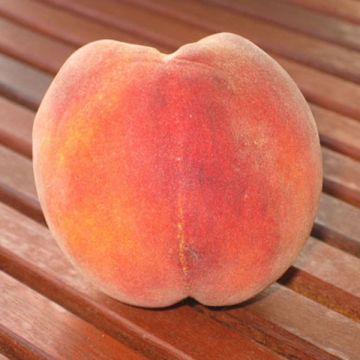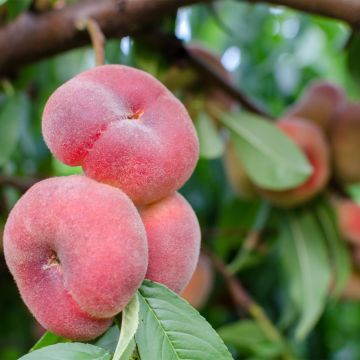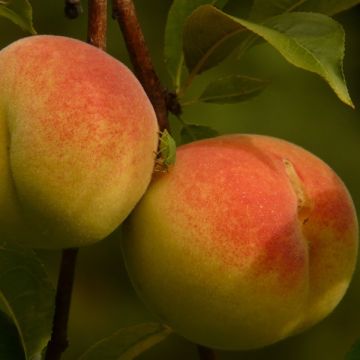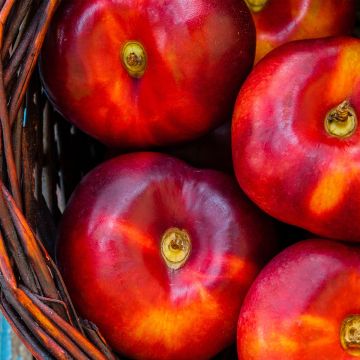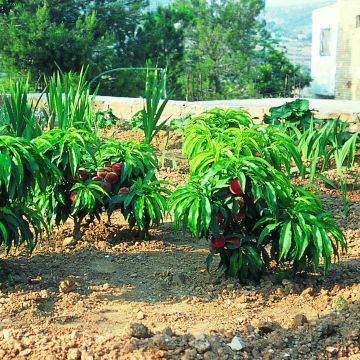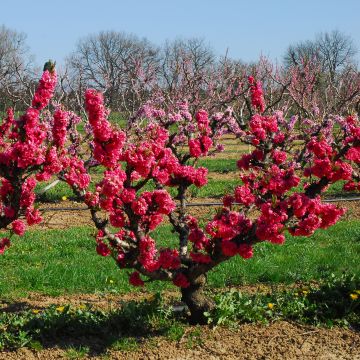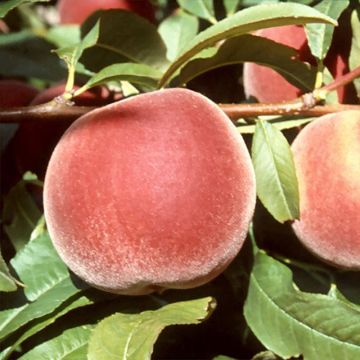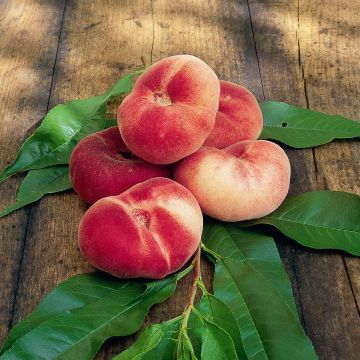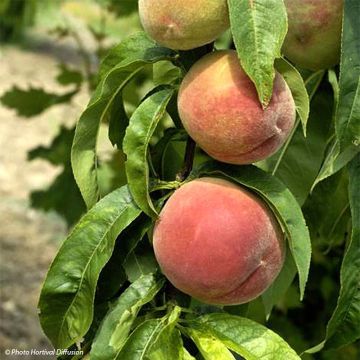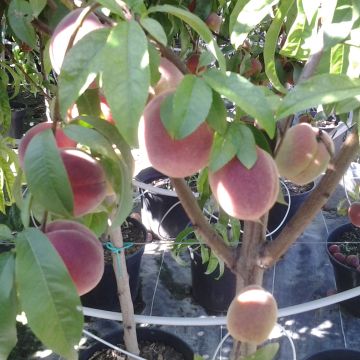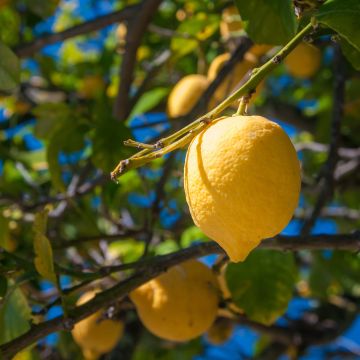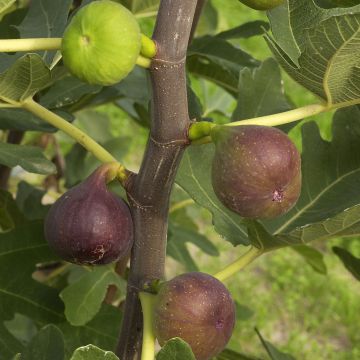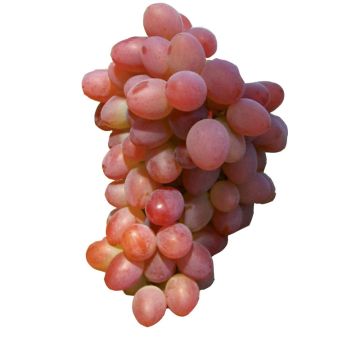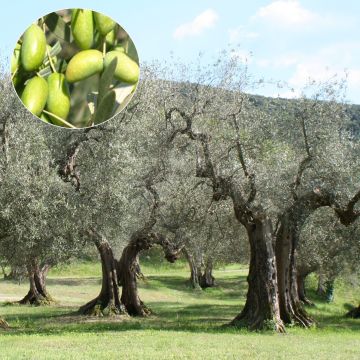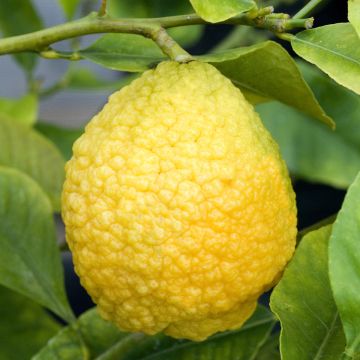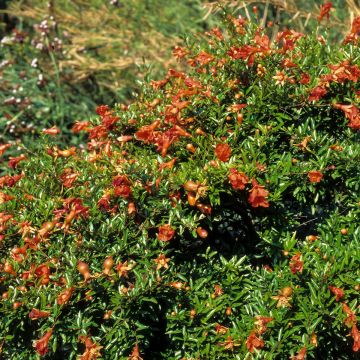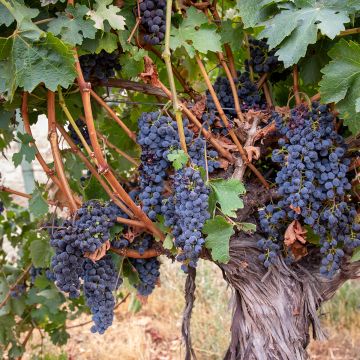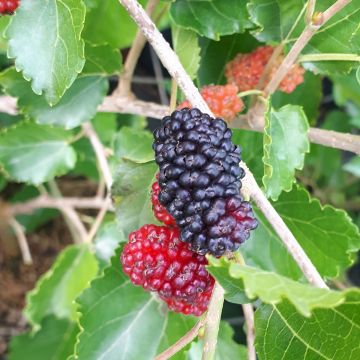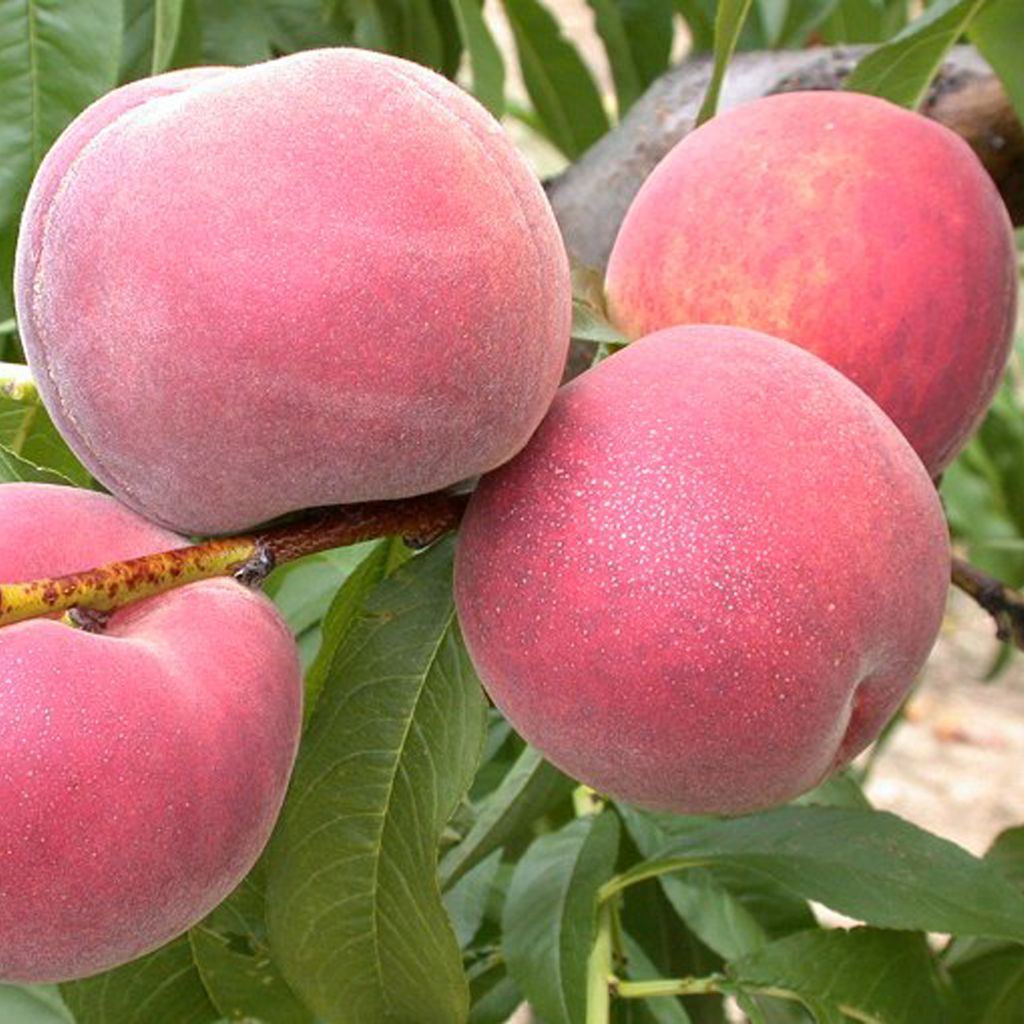

Prunus persica Dwarf Peach Dixired - Dwarf Peach Tree
Prunus persica Dwarf Peach Dixired - Dwarf Peach Tree
Prunus persica Dixired
Peach, Peach tree
This item cannot be shipped to the selected country
Oversize package delivery charge from €6.90
More information
Oversize package delivery charge from €6.90
More information
Schedule delivery date,
and select date in basket
This plant carries a 6 months recovery warranty
More information
We guarantee the quality of our plants for a full growing cycle, and will replace at our expense any plant that fails to recover under normal climatic and planting conditions.
Oversize package: home delivery by special carrier from €6.90 per order..
Express home delivery from €8.90.
Description
The Dixired Peach is a self-fertile, vigorous, and productive variety. Its rounded fruits are red striped with yellow. Their flesh is yellow with a fine grain, firm, quite juicy, and of good taste quality. They are ideal for making syrups and pastries. Harvest takes place at ripeness, from mid-June to July depending on the regions, with ripening being staggered.
The species name 'Persica' was given to the peach, which was thought to originate from Persia. In reality, all cultivated forms originate from northern China. Its appearance in Europe occurred in the 6th century and experienced significant development in the 19th century. From there, numerous selections aiming to improve the taste qualities of the fruit took place. The Dixired Peach originates from Georgia, USA.
Like many fruit trees, the Dixired Peach appreciates light, rich, and deep soils. It does not tolerate excess water or heavy and compact soils. A sunny location sheltered from the wind will help with fruiting, which can sometimes be irregular.
It is a vigorous tree with a spreading habit, indicating a tall trunk tree with many branches that grow horizontally, giving it an elegant spread silhouette. Its deciduous foliage is a vibrant green and emits a slight almond scent. Its leaves are long, ranging from 8 to 15 cm (3 to 6in) in length and 3 to 4 cm (1 to 2in) in width, with a short petiole.
Its early pink flowering occurs in March. It is susceptible to frost, so protection is welcome in winter. The flowers are hermaphroditic and self-fertile.
Fruit production results in rounded fruits, red striped with yellow. They have a yellow flesh with a fine grain, firm, quite juicy, and of good taste quality. This tree does not require too much maintenance. It tolerates pruning well.
Peaches can be enjoyed raw, cooked, sweet, savoury, flambéed, glazed, or deglazed. They pair very well with wine and certain meats, such as duck. They can be found in numerous recipes, particularly in jams, compotes, pastries,...
Prunus persica Dwarf Peach Dixired - Dwarf Peach Tree in pictures
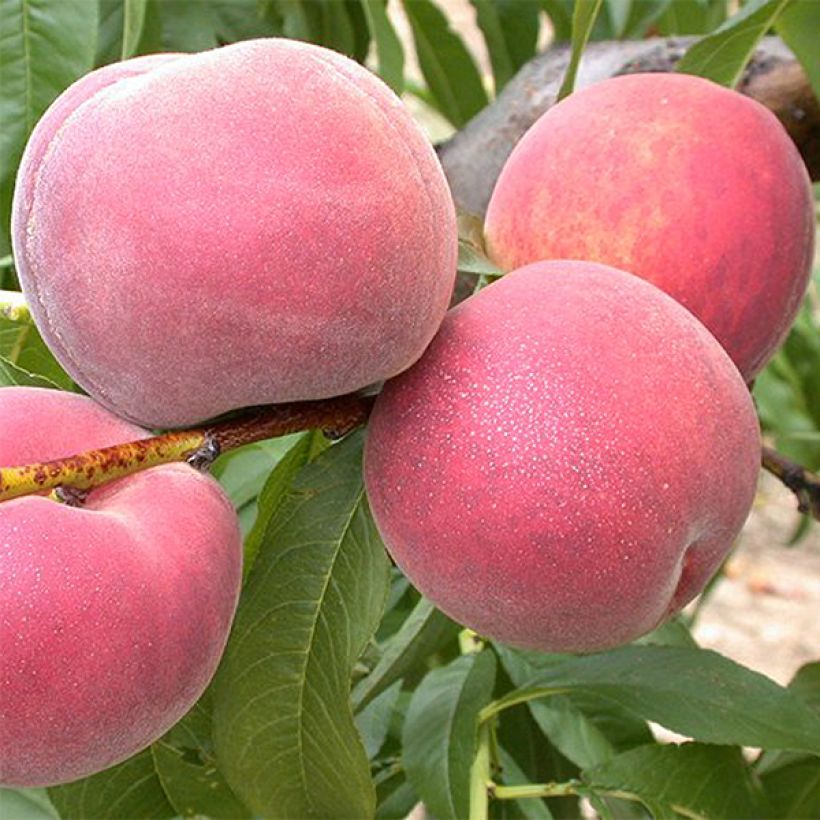

Plant habit
Fruit
Flowering
Foliage
Botanical data
Prunus
persica
Dixired
Rosaceae
Peach, Peach tree
Western Europe
Other Peach and Nectarine trees
View all →Planting and care
The Dixired Peach is preferably planted from October to December. Dig a hole two to three weeks before planting, twice as wide and deep as the pot. On the day, place the tree with its pot in a basin of water, in order to moisten the entire root ball by capillarity. Add compost at the bottom of the hole. Plant the tree in the hole, fill with a mixture of soil and compost. Gently tamp around the base of the fruit tree as you fill, the roots should be in close contact with the soil. The root ball should be completely covered. Water generously.
The Dixired Peach has a semi-pivoting root system. It will thrive in fairly deep soils. It also prefers a light and well-draining soil.
Planting period
Intended location
Care
-
, onOrder confirmed
Reply from on Promesse de fleurs
Similar products
Haven't found what you were looking for?
Hardiness is the lowest winter temperature a plant can endure without suffering serious damage or even dying. However, hardiness is affected by location (a sheltered area, such as a patio), protection (winter cover) and soil type (hardiness is improved by well-drained soil).

Photo Sharing Terms & Conditions
In order to encourage gardeners to interact and share their experiences, Promesse de fleurs offers various media enabling content to be uploaded onto its Site - in particular via the ‘Photo sharing’ module.
The User agrees to refrain from:
- Posting any content that is illegal, prejudicial, insulting, racist, inciteful to hatred, revisionist, contrary to public decency, that infringes on privacy or on the privacy rights of third parties, in particular the publicity rights of persons and goods, intellectual property rights, or the right to privacy.
- Submitting content on behalf of a third party;
- Impersonate the identity of a third party and/or publish any personal information about a third party;
In general, the User undertakes to refrain from any unethical behaviour.
All Content (in particular text, comments, files, images, photos, videos, creative works, etc.), which may be subject to property or intellectual property rights, image or other private rights, shall remain the property of the User, subject to the limited rights granted by the terms of the licence granted by Promesse de fleurs as stated below. Users are at liberty to publish or not to publish such Content on the Site, notably via the ‘Photo Sharing’ facility, and accept that this Content shall be made public and freely accessible, notably on the Internet.
Users further acknowledge, undertake to have ,and guarantee that they hold all necessary rights and permissions to publish such material on the Site, in particular with regard to the legislation in force pertaining to any privacy, property, intellectual property, image, or contractual rights, or rights of any other nature. By publishing such Content on the Site, Users acknowledge accepting full liability as publishers of the Content within the meaning of the law, and grant Promesse de fleurs, free of charge, an inclusive, worldwide licence for the said Content for the entire duration of its publication, including all reproduction, representation, up/downloading, displaying, performing, transmission, and storage rights.
Users also grant permission for their name to be linked to the Content and accept that this link may not always be made available.
By engaging in posting material, Users consent to their Content becoming automatically accessible on the Internet, in particular on other sites and/or blogs and/or web pages of the Promesse de fleurs site, including in particular social pages and the Promesse de fleurs catalogue.
Users may secure the removal of entrusted content free of charge by issuing a simple request via our contact form.

































